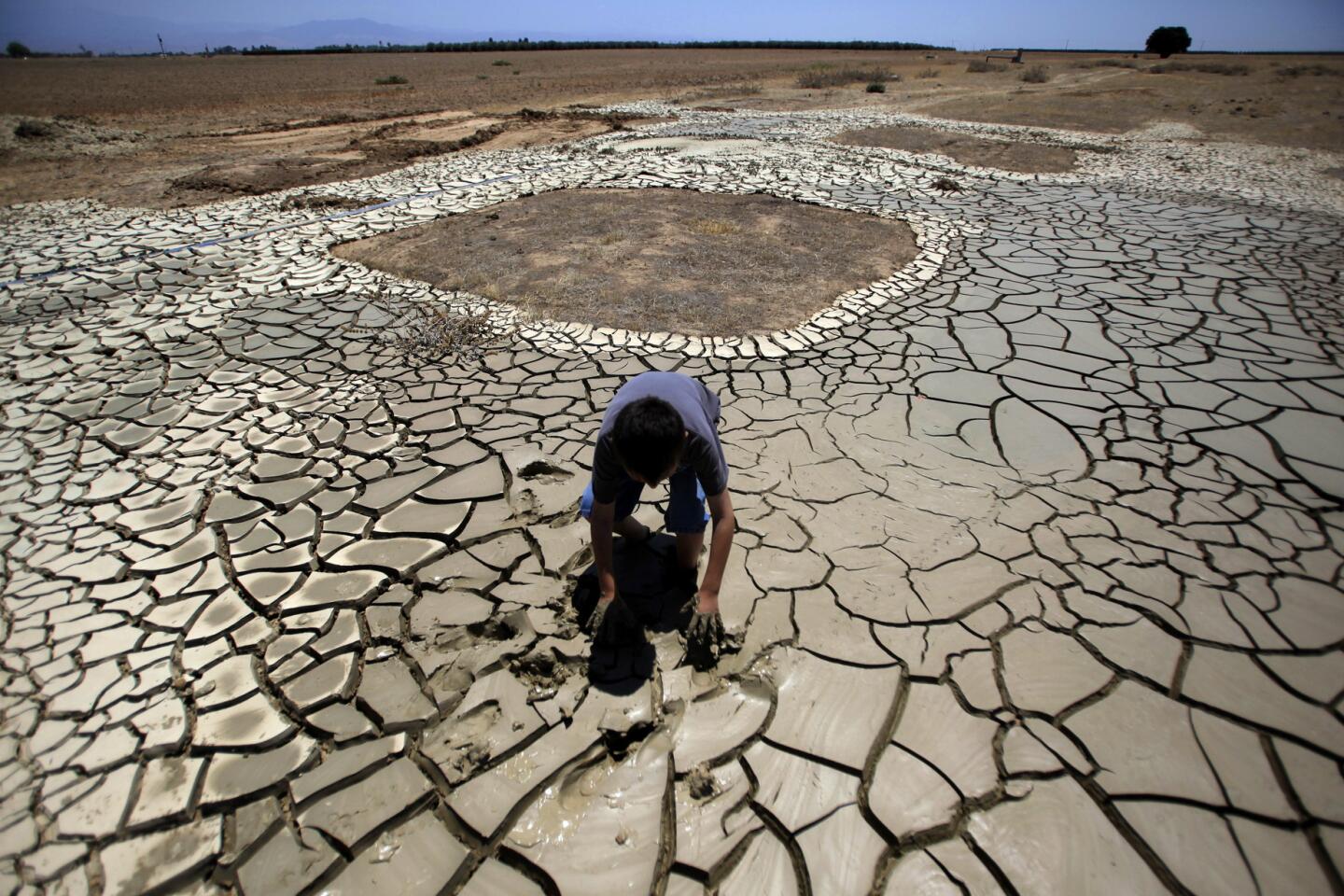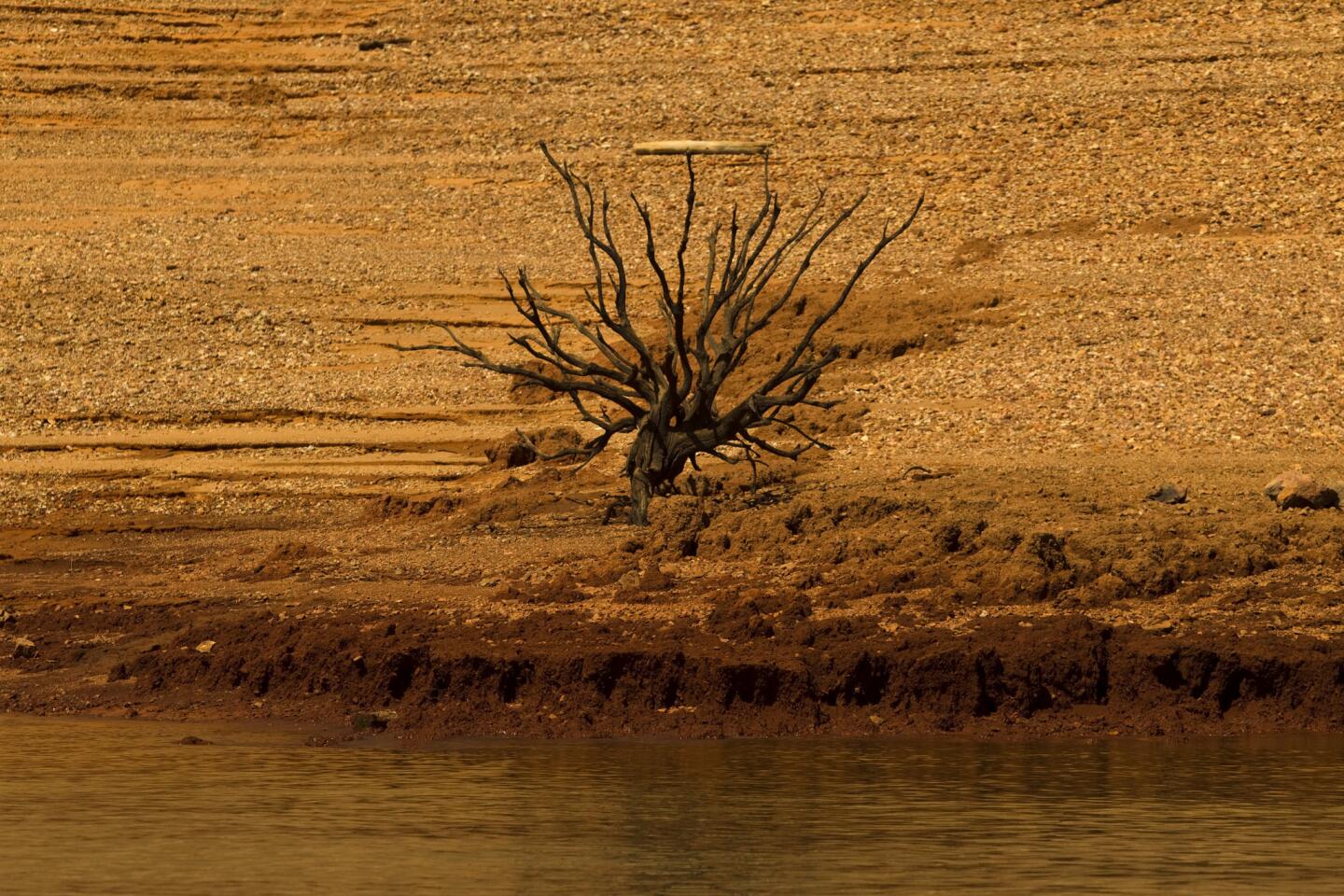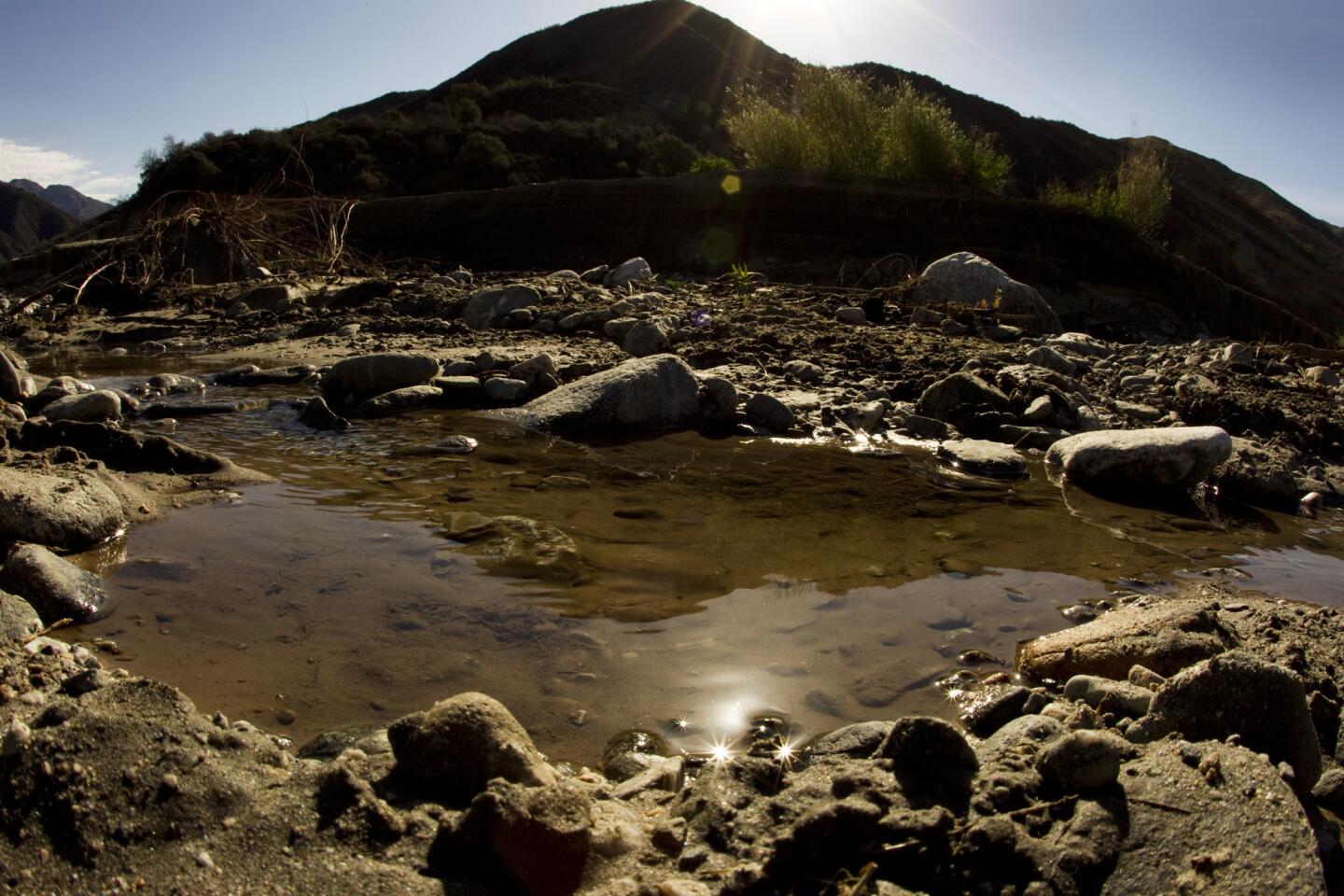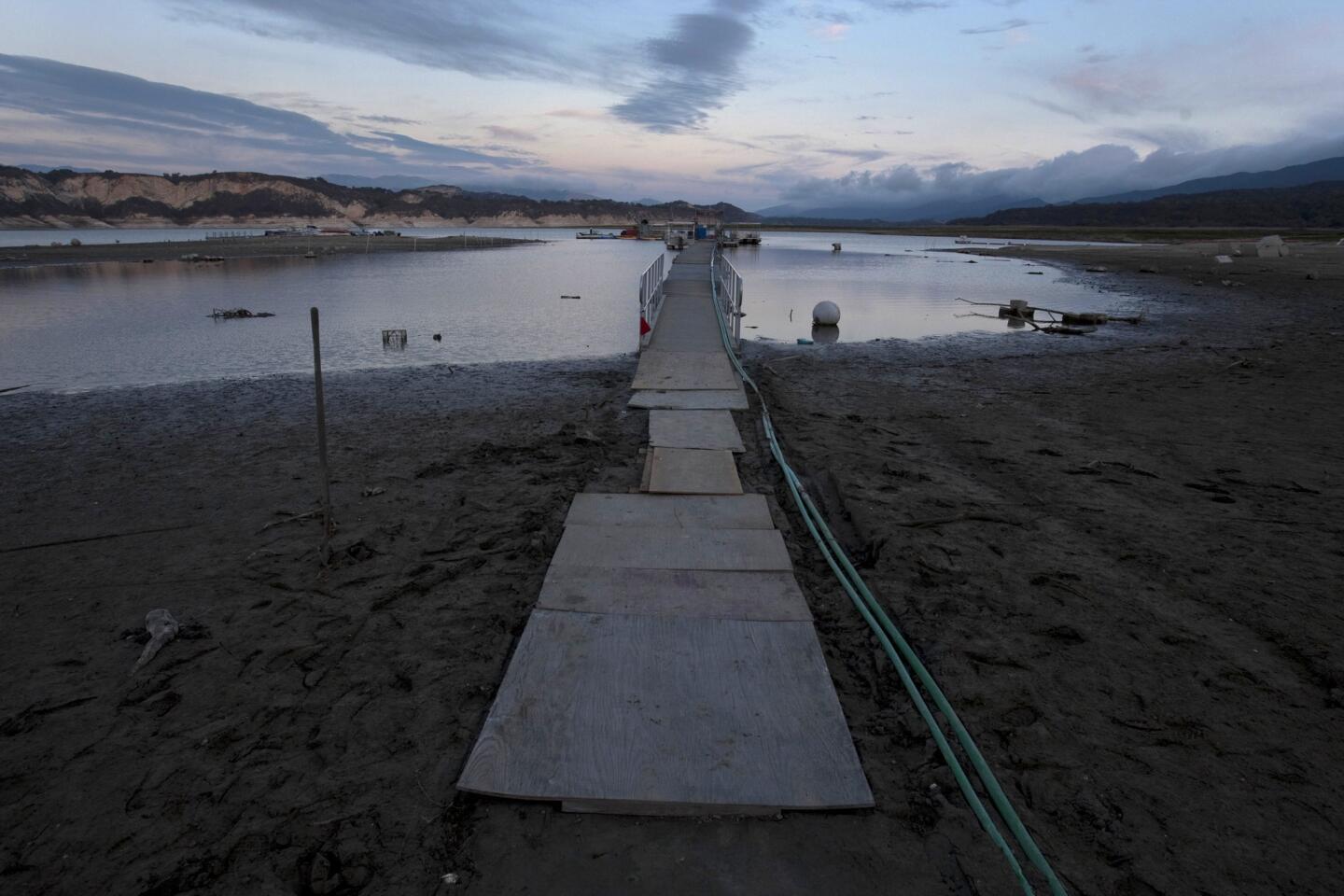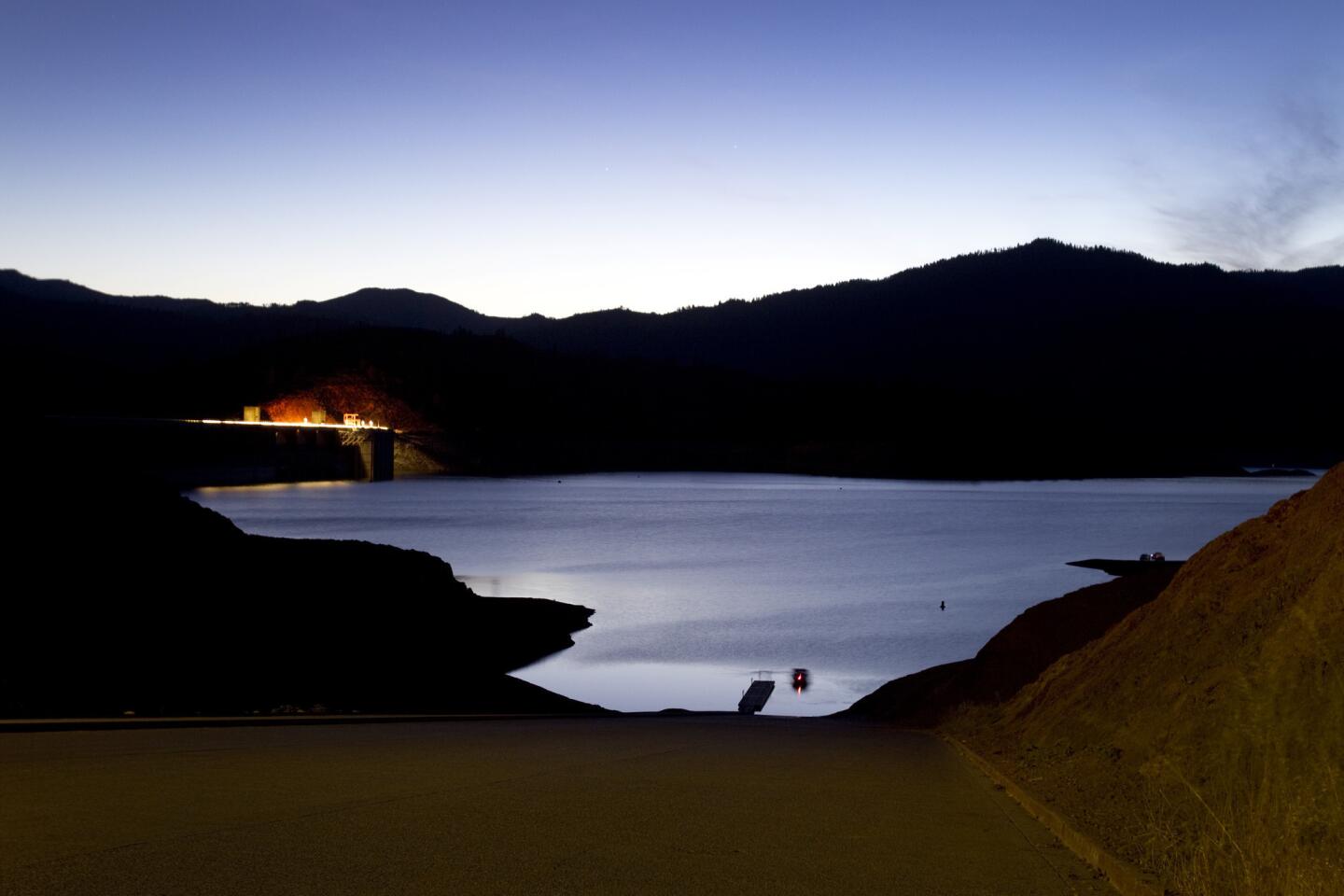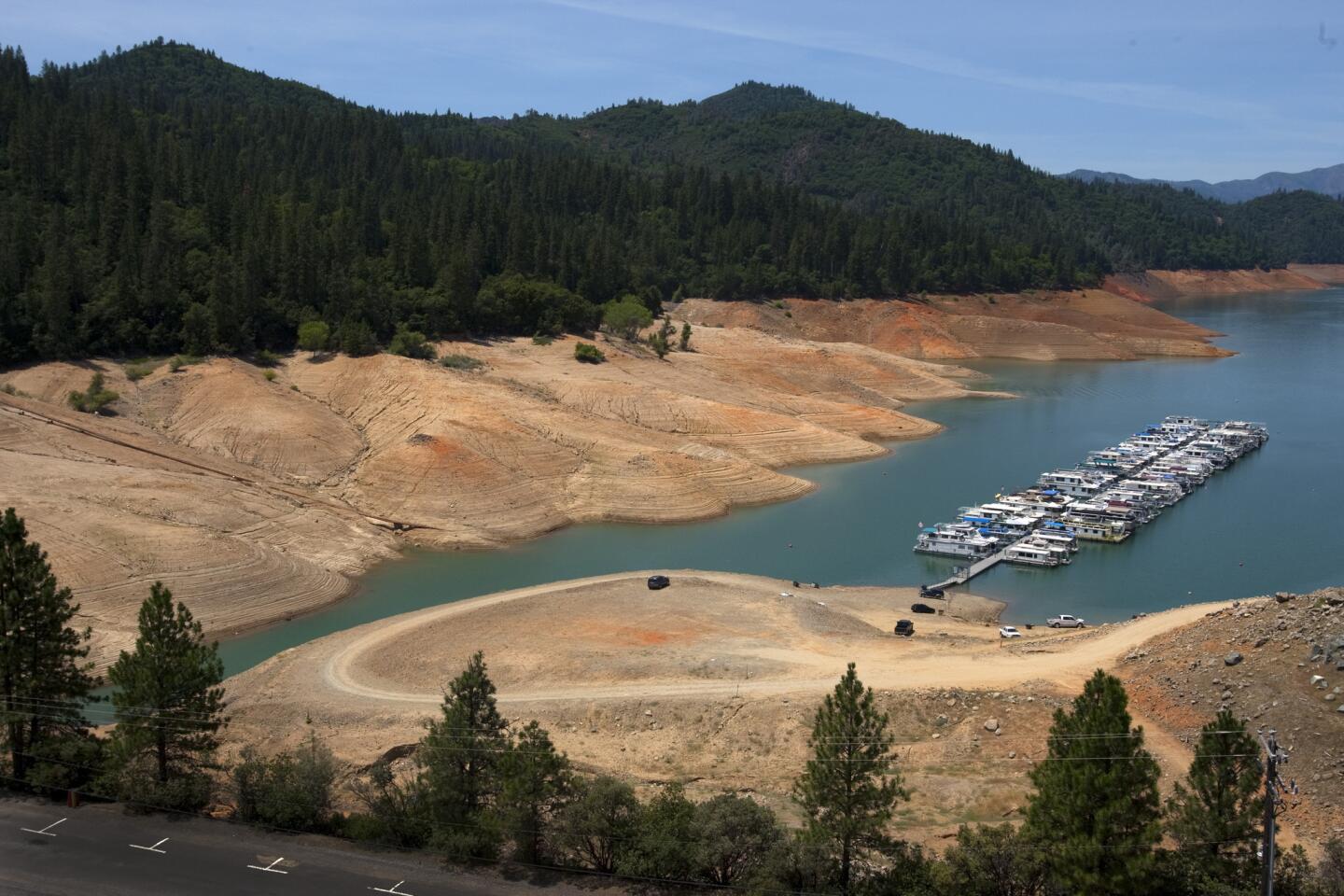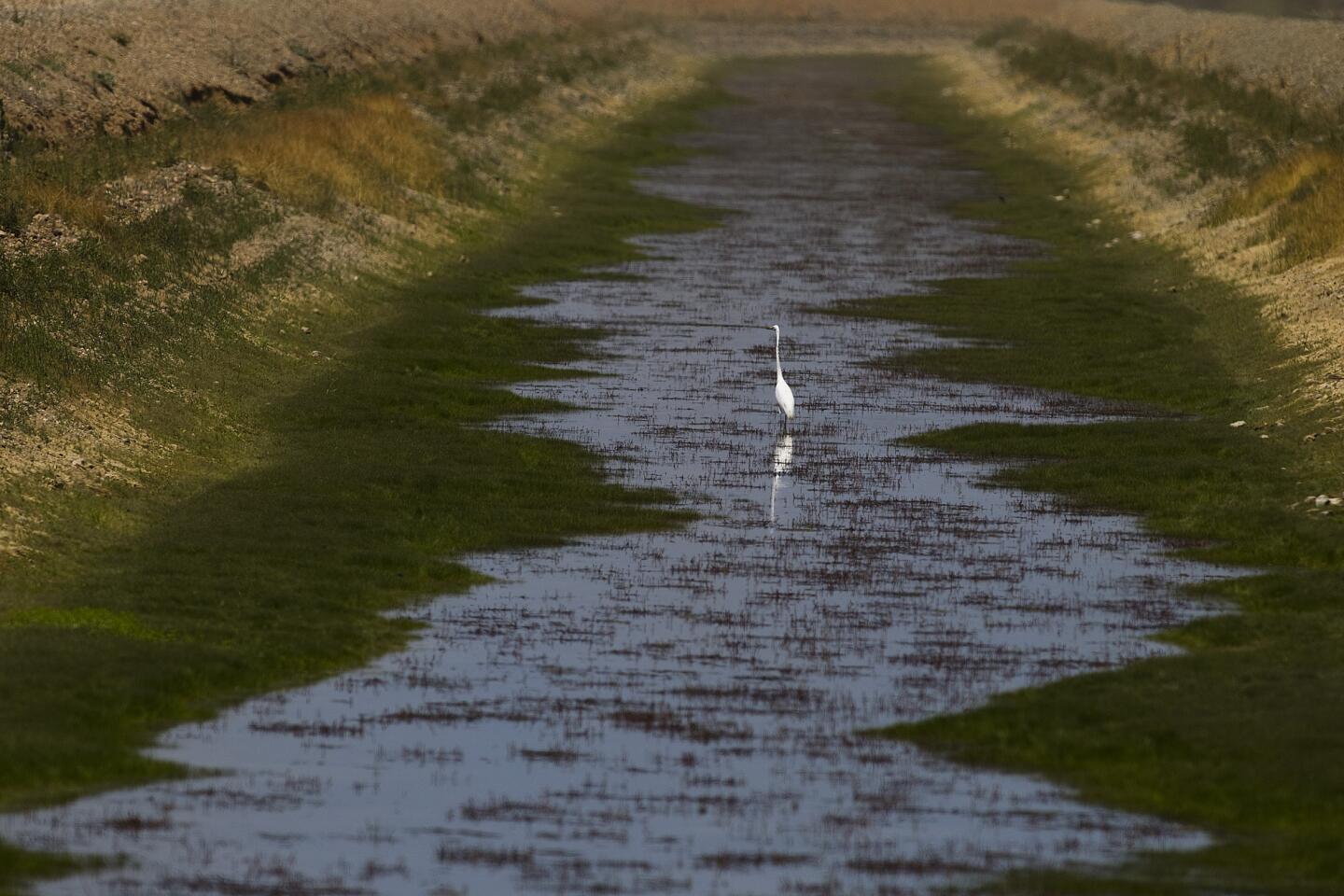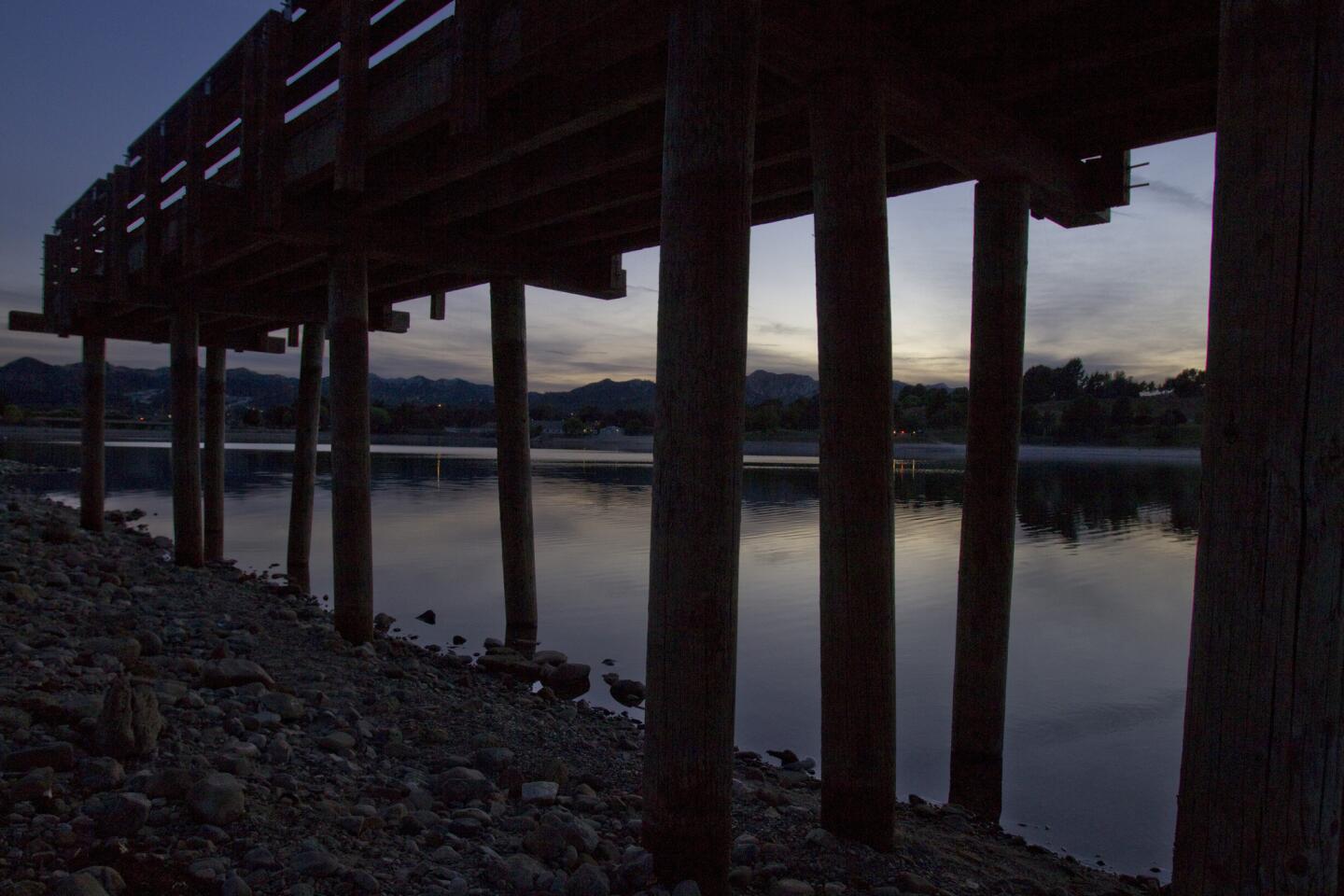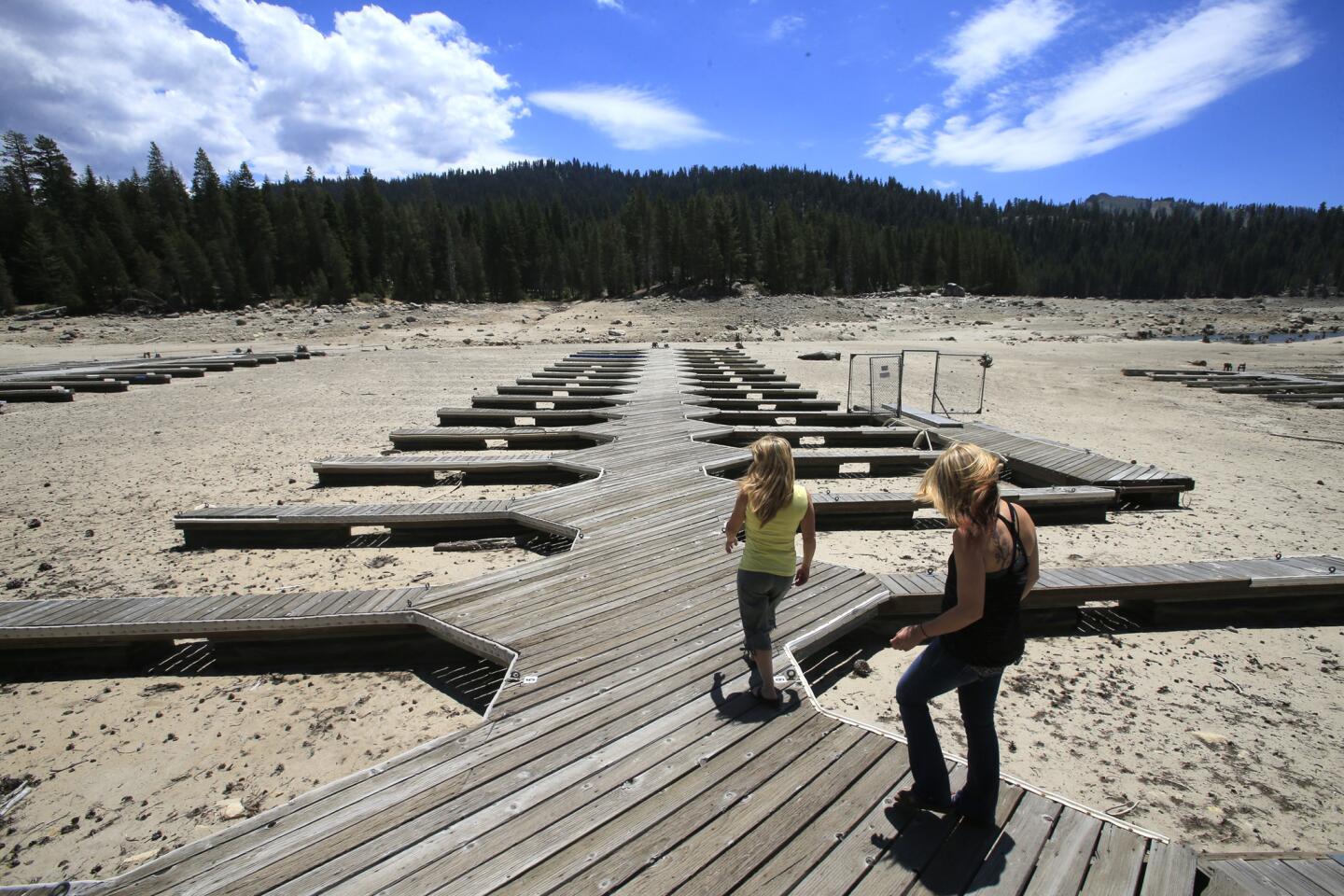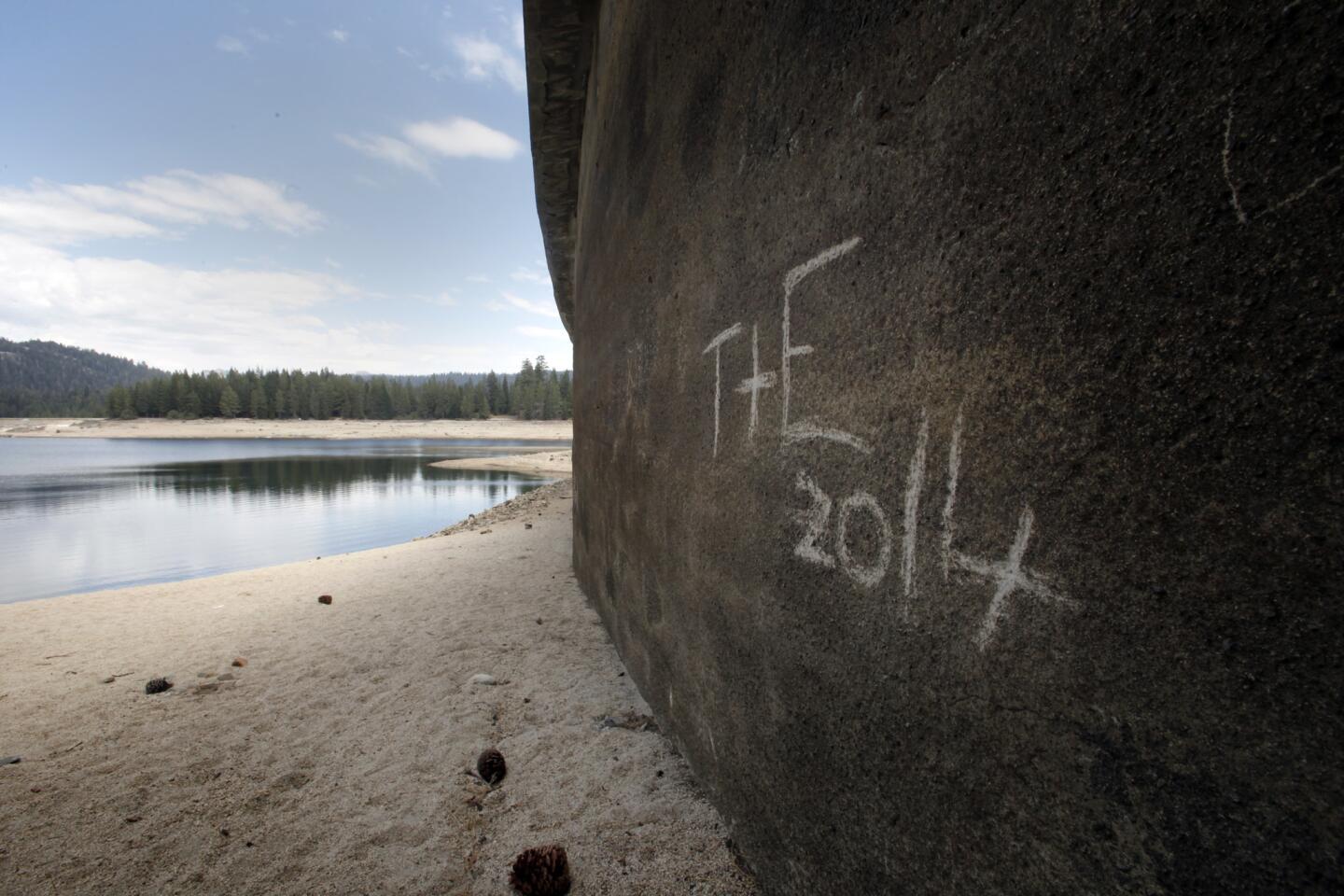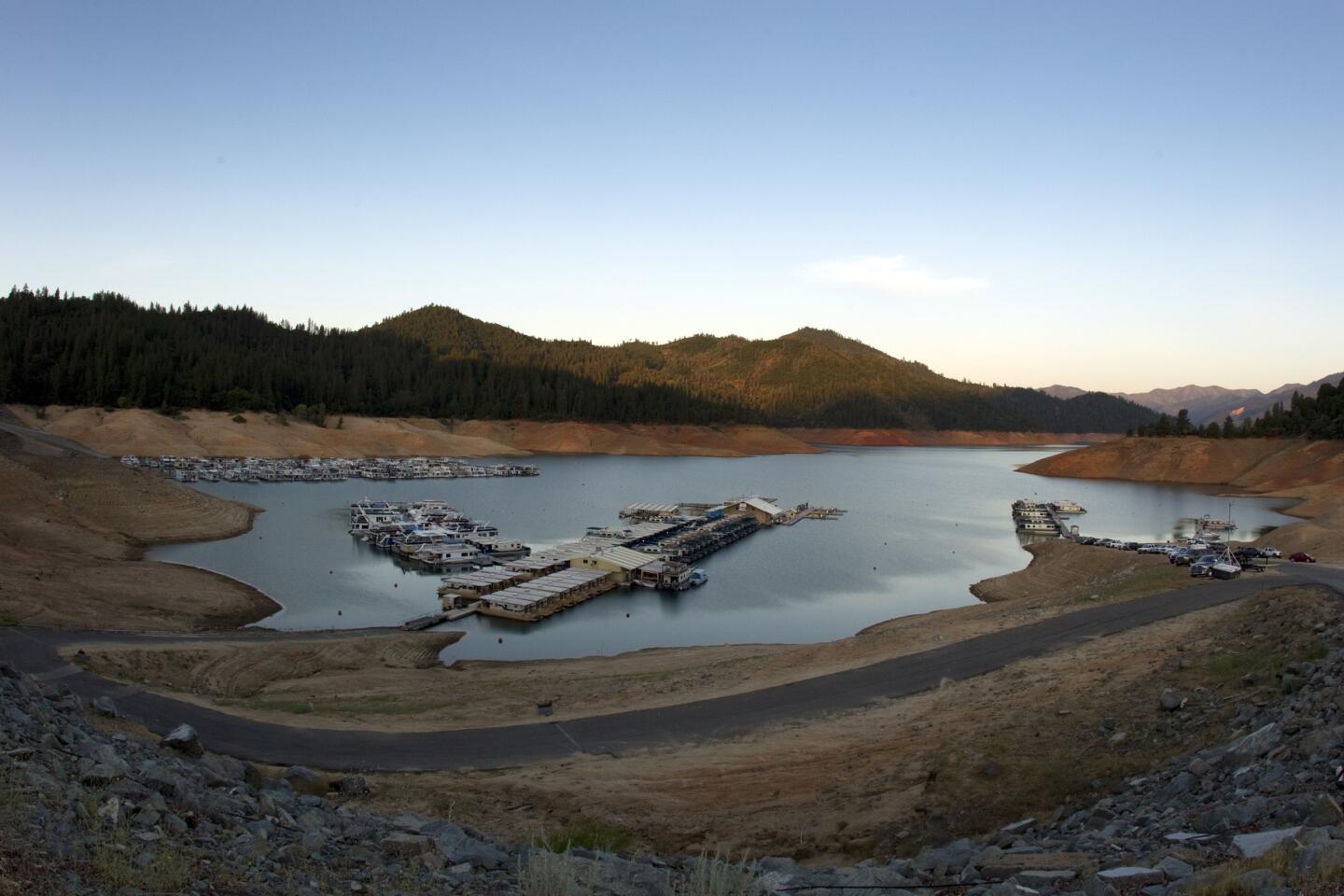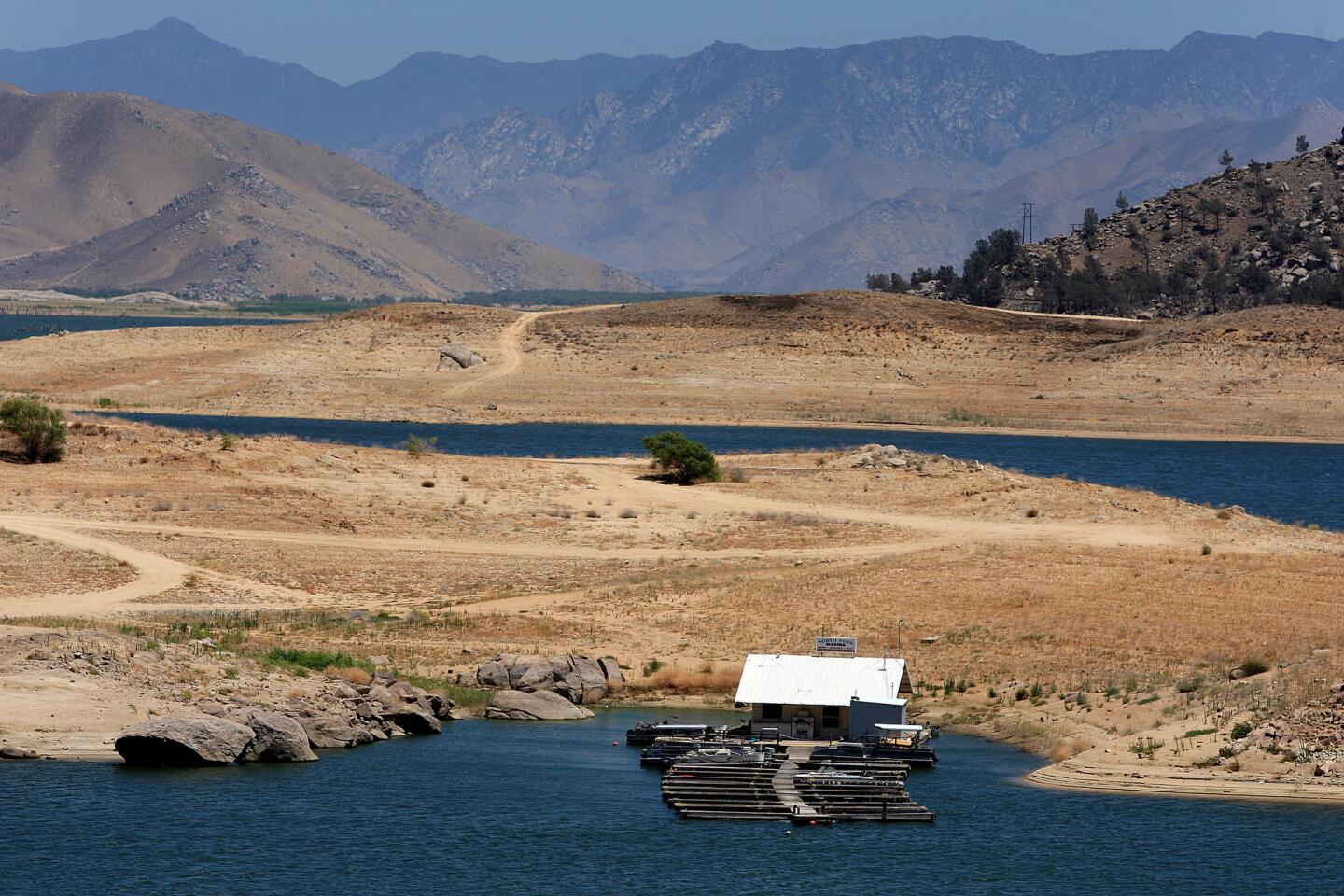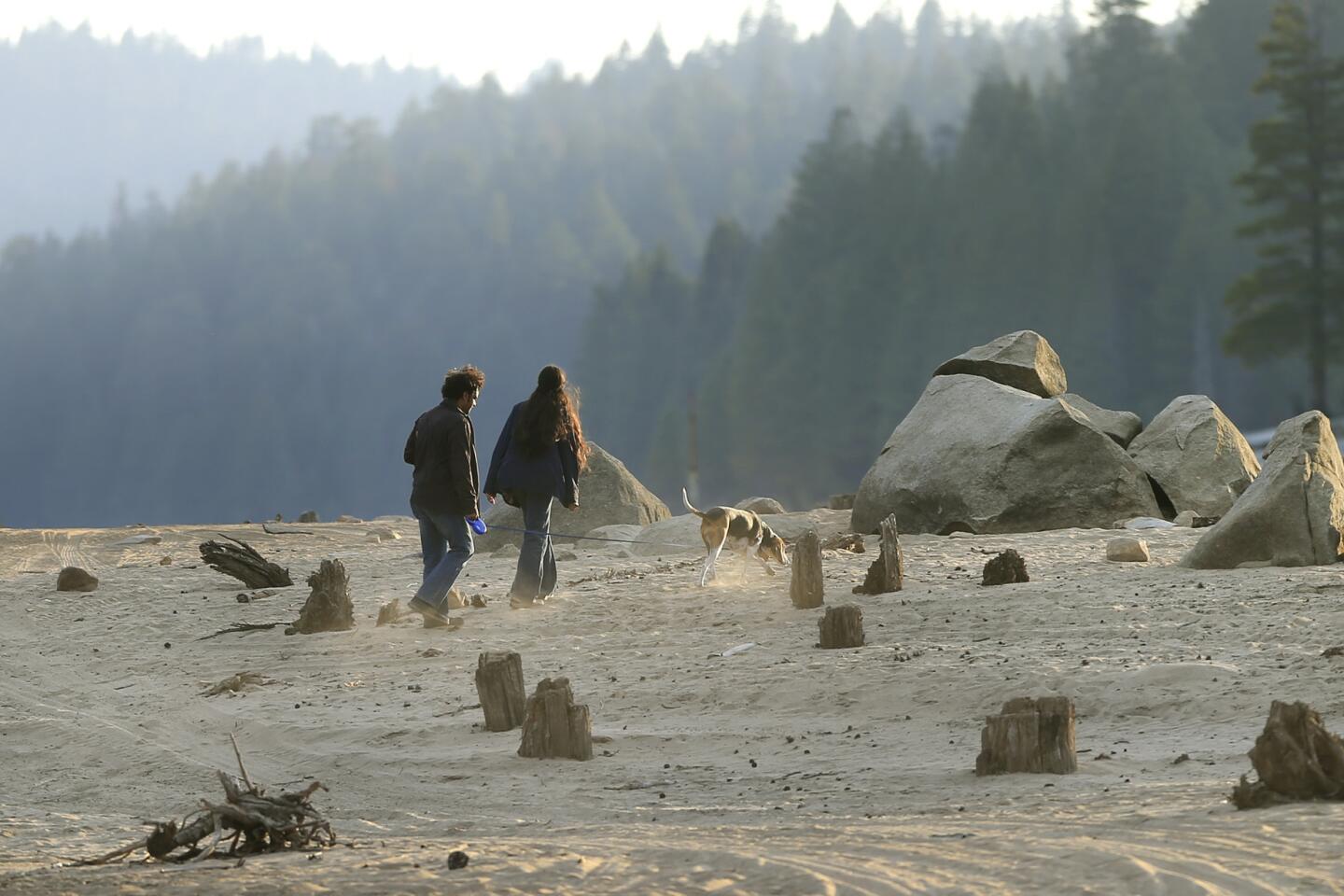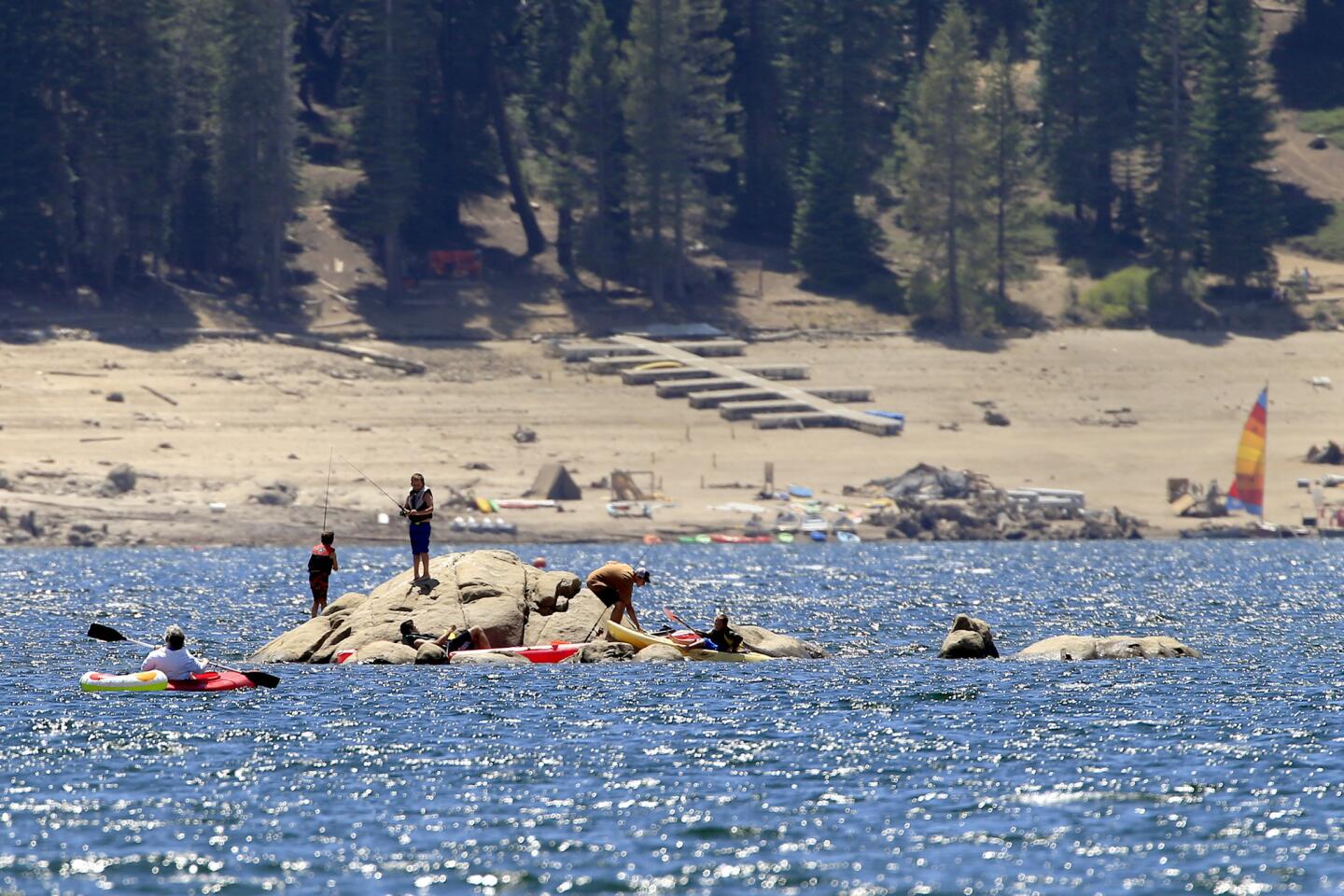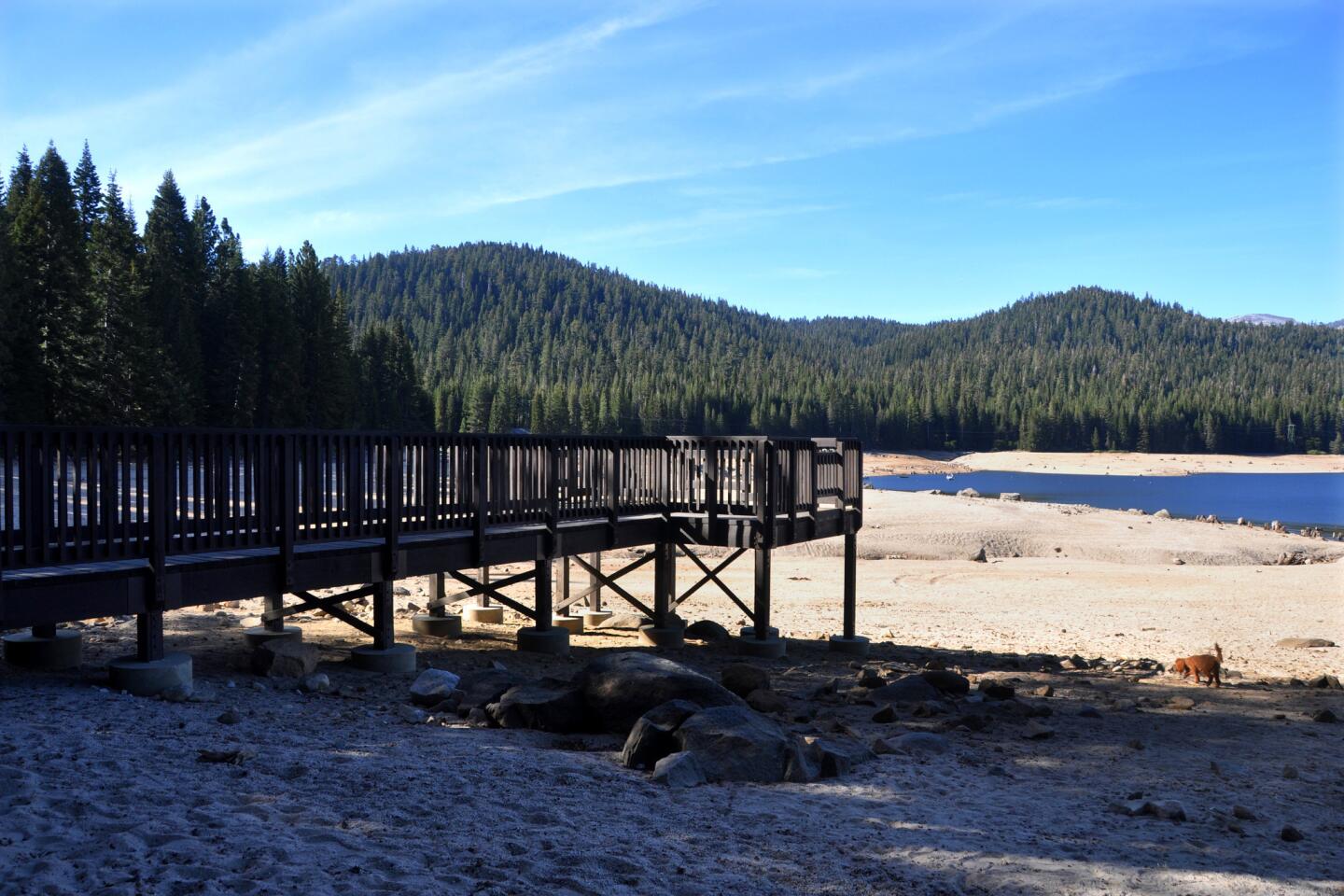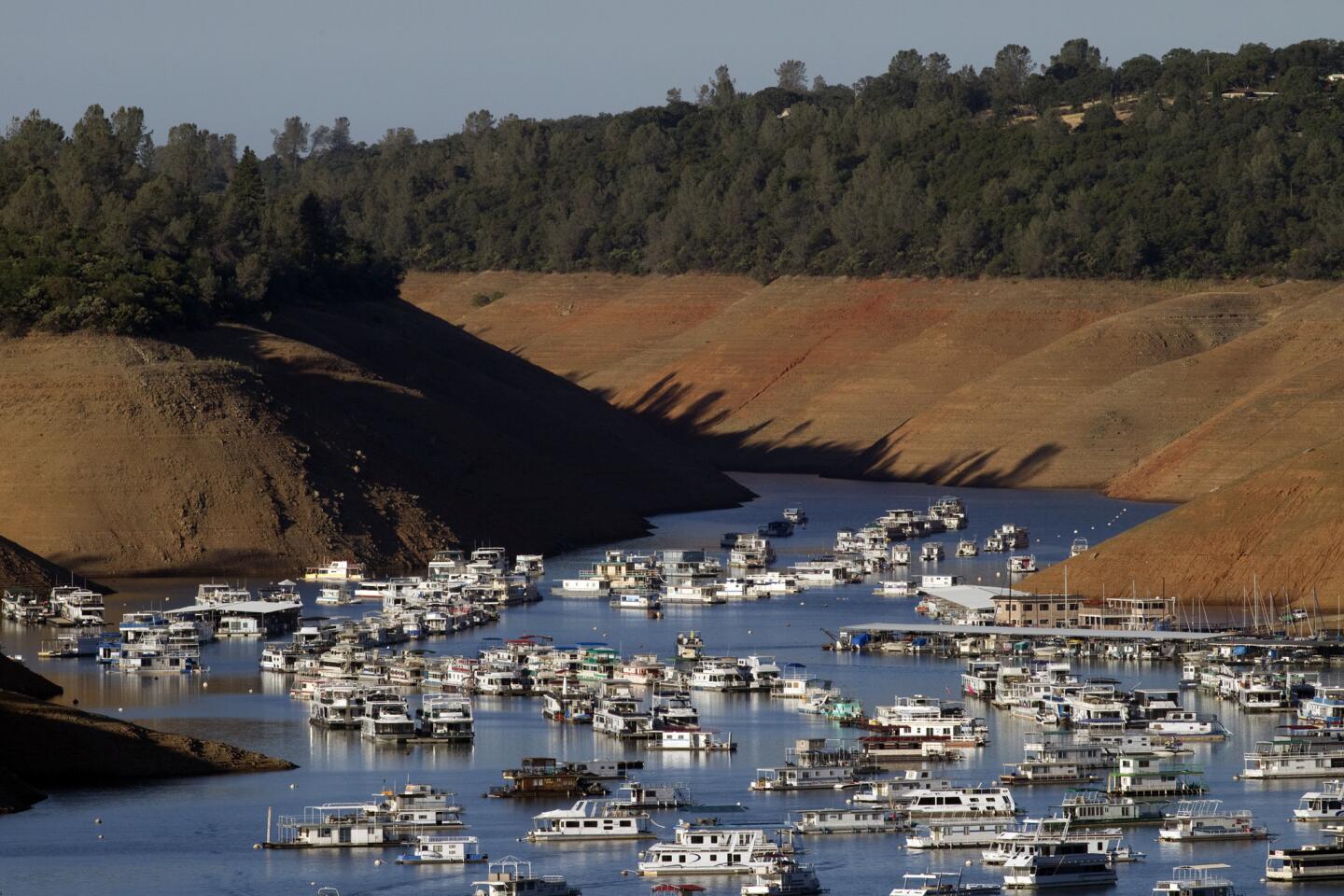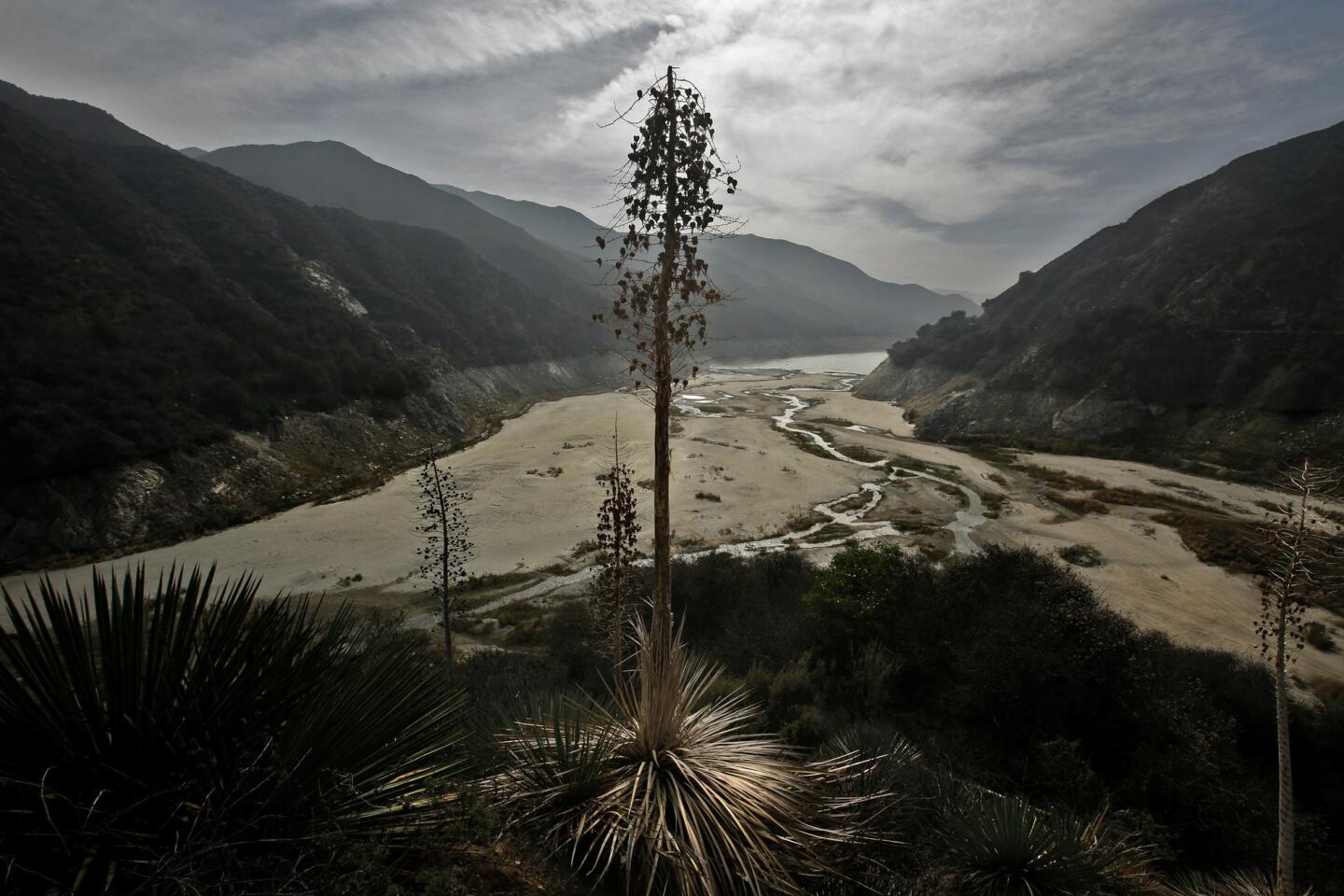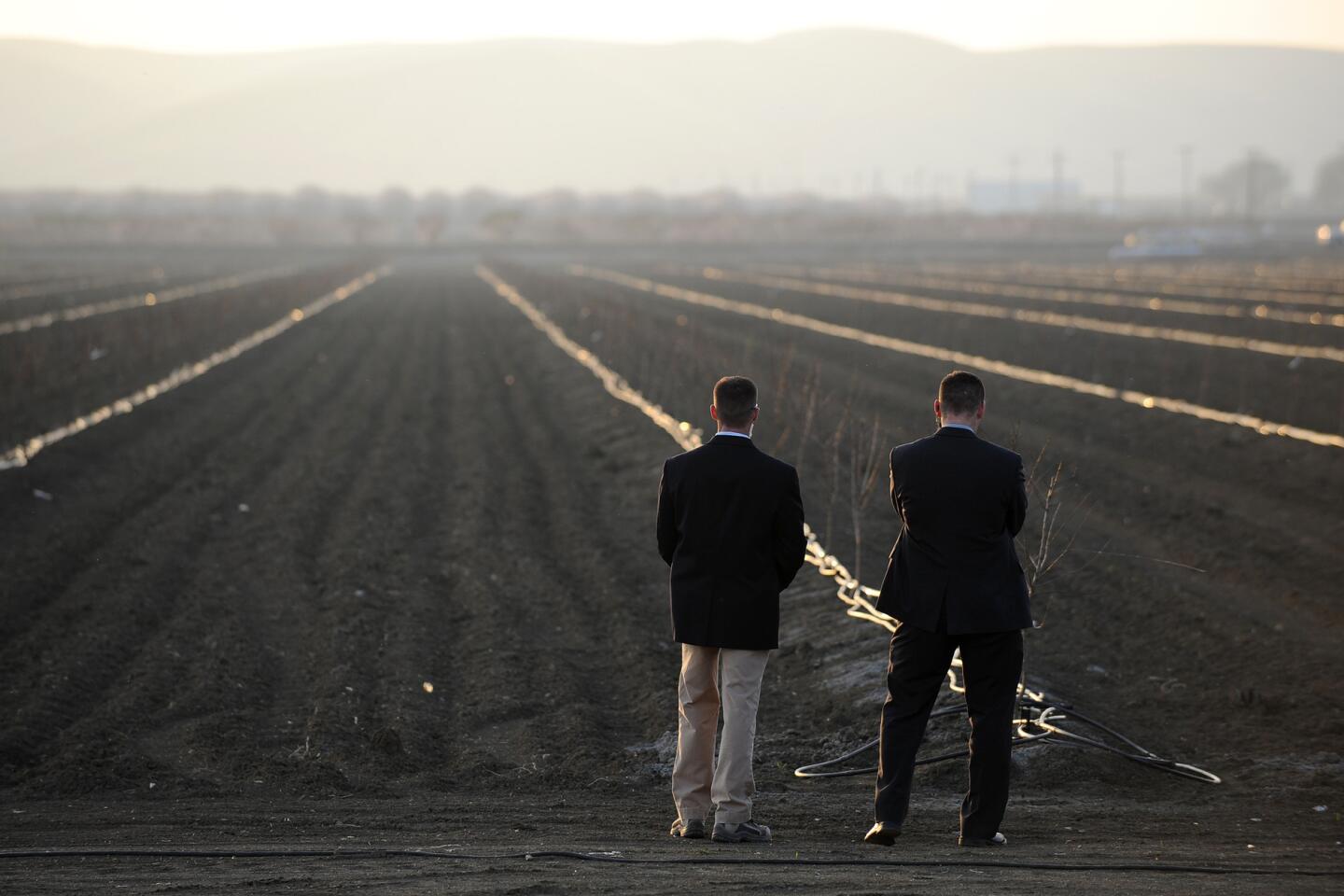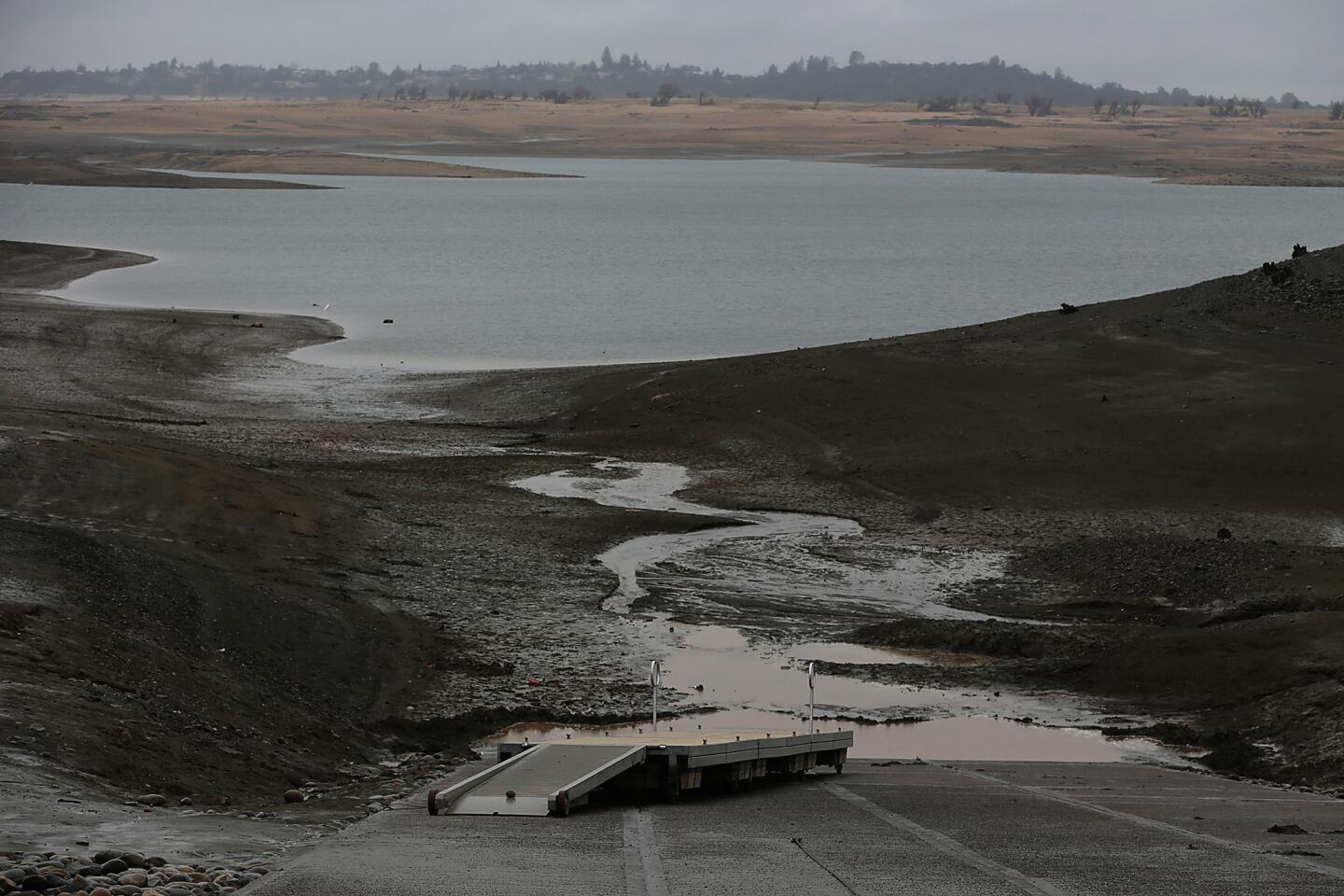Major California reservoirs below 50% capacity as drought wears on
- Share via
Most of California’s major reservoirs are now less than half-full -- or at what officials call a “seriously low” level -- but that’s still nowhere near the historic lows set in 1977, the state’s driest year on record.
The latest report released Wednesday by the California Department of Water Resources shows 10 of the state’s 12 major reservoirs below 50% of their total capacity, with some nearing just 20%.
“They are not historical levels, but they are seriously low,” department spokesman Ted Thomas said.
But when all 12 of the major reservoirs are combined, the average is at 60%, Thomas said. That’s puts the state in a far better position than it was 37 years ago, when a crippling drought brought the statewide reservoir average down to 41%.
As of Wednesday, the largest federal reservoir in California at Lake Shasta was only at 36% capacity, which is 4.5 million acre-feet of water, he added.
The Sierra snowpack -- which provides most of California’s drinking water -- was at 32% of its average annual depth this winter. And some climatologists say there’s a chance that the strong El Nino weather pattern that had been hoped for may not materialize.
Reservoir levels may continue to drop if the three-year drought persists, Thomas said.
“The more we use, the less there is,” he said.
The lack of rain has already pushed nearly 80% of California into “extreme” and “exceptional” drought conditions, the highest categories of dryness, according to the U.S. Drought Monitor map.
Officials are trying to retain current reservoir levels by cutting back on water shipments to local agencies, Thomas said. That, in turn, has prompted agencies and property owners to tap underground aquifers, which have also taken a hit.
Meanwhile, agencies across the state have been pushing conservation measures, which have become increasingly mandatory. Last week, state officials approved a $500 fine for water wasters.
Gov. Jerry Brown on Monday signed a bill that prohibits homeowners associations from imposing fines on residents who stop watering their lawns in an effort to conserve water.
The law, however, does not apply to fines imposed by local governments, some of which have been issuing citations.
For breaking news in Los Angeles and throughout California, follow @VeronicaRochaLA. She can be reached at veronica.rocha@latimes.com.
More to Read
Sign up for Essential California
The most important California stories and recommendations in your inbox every morning.
You may occasionally receive promotional content from the Los Angeles Times.
